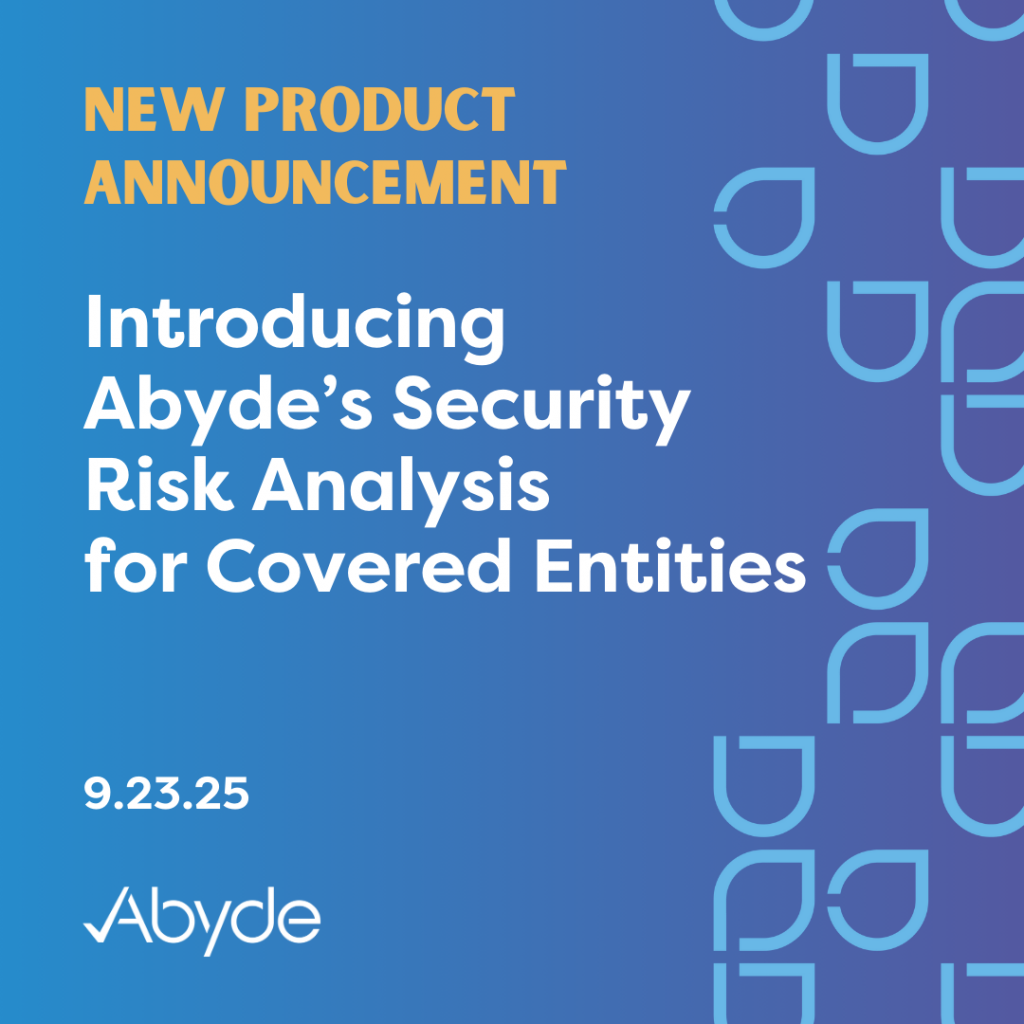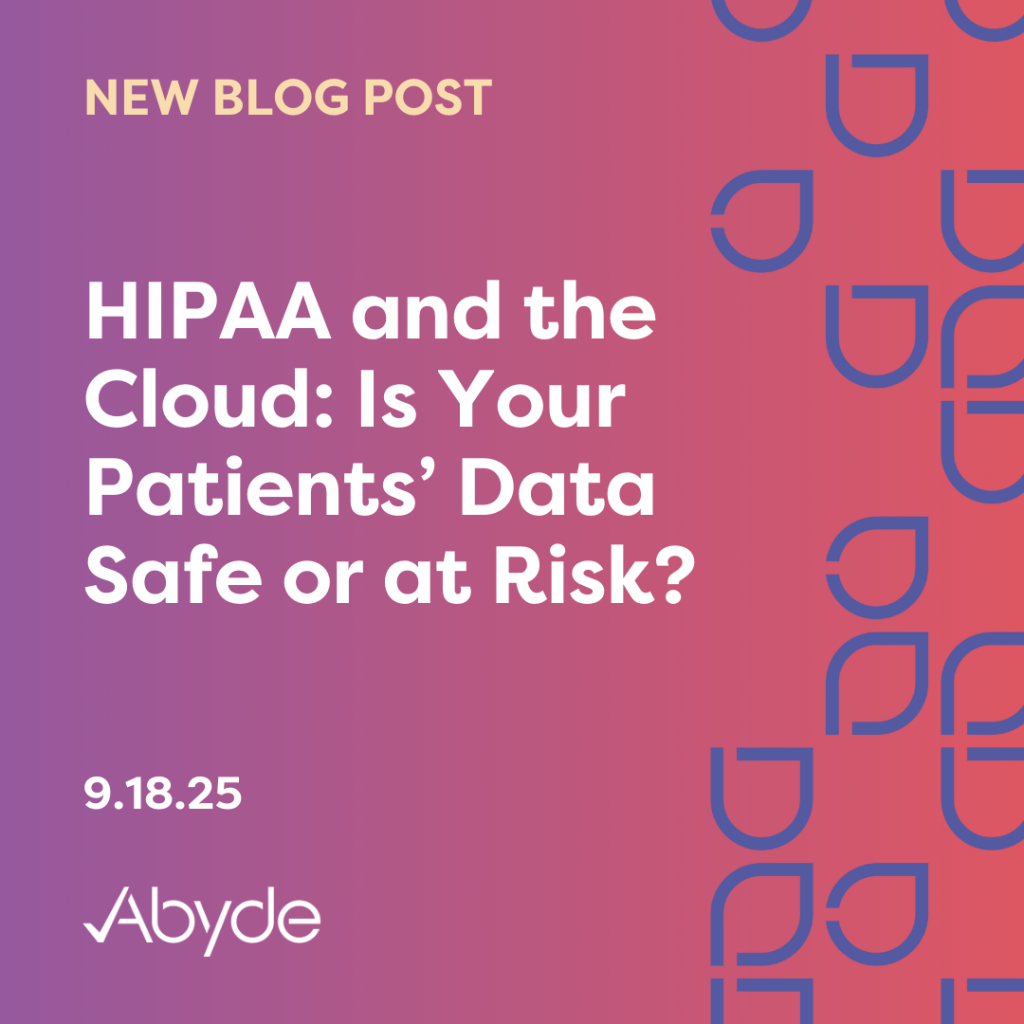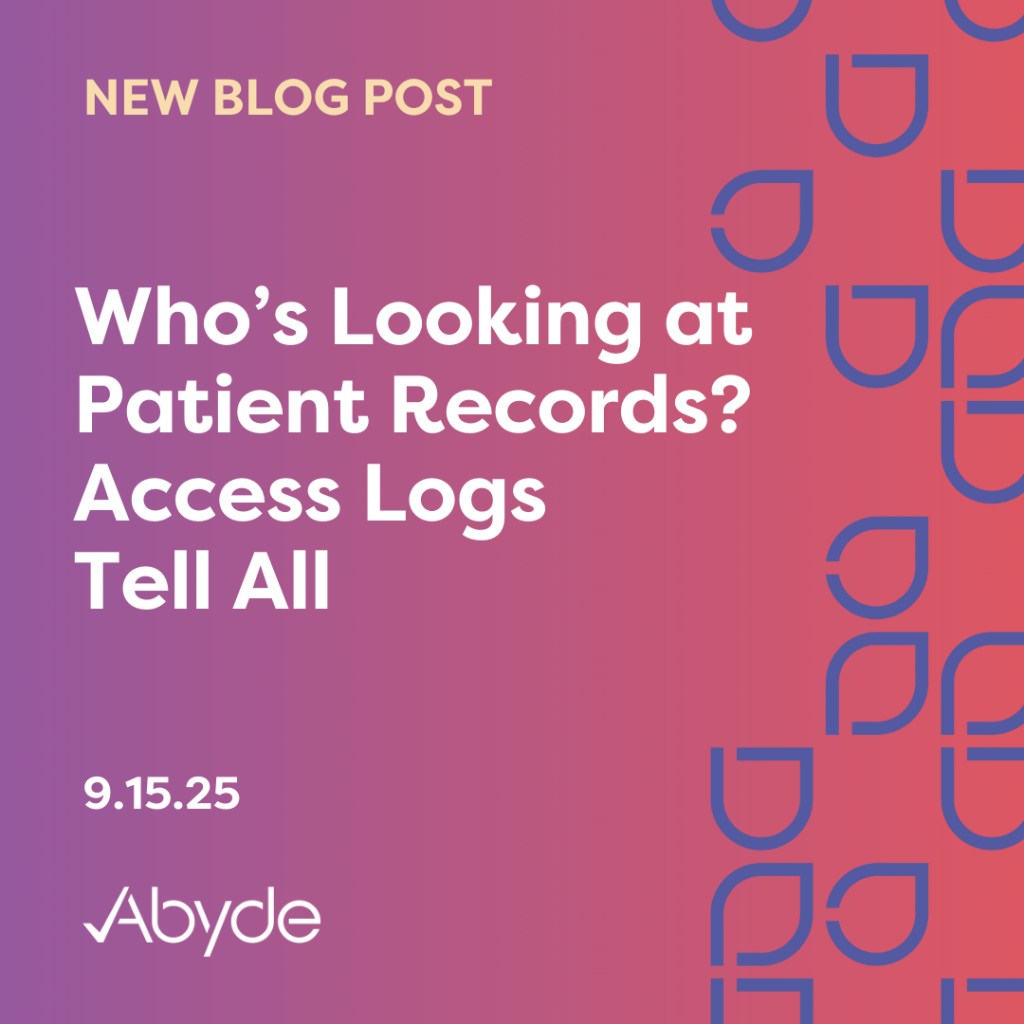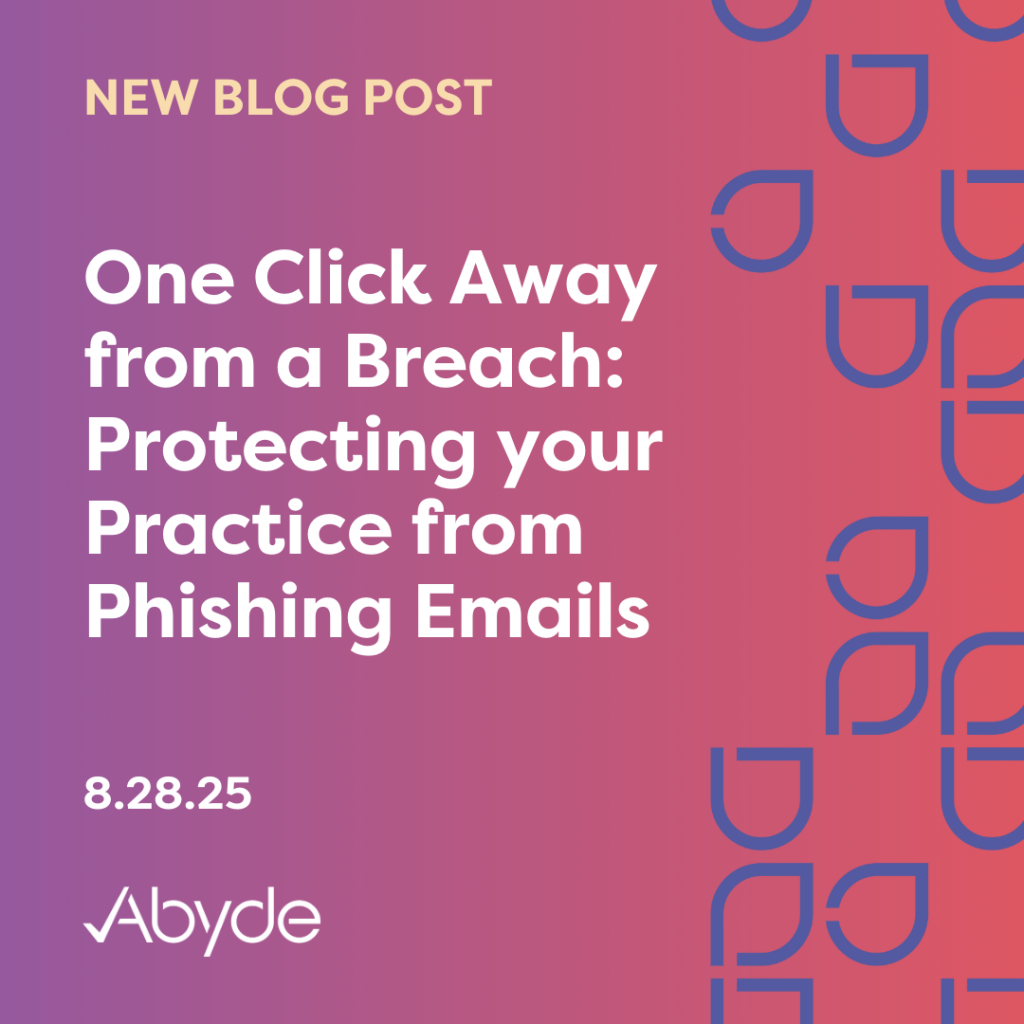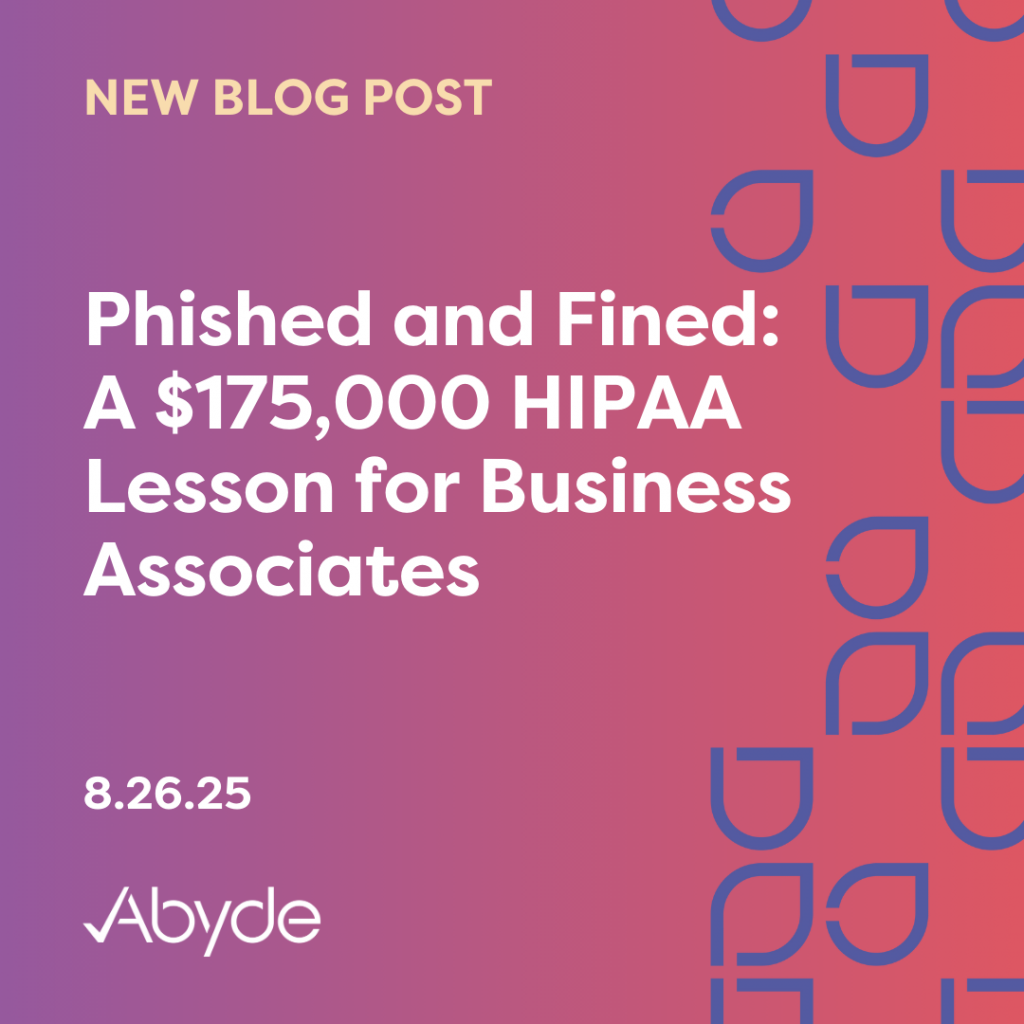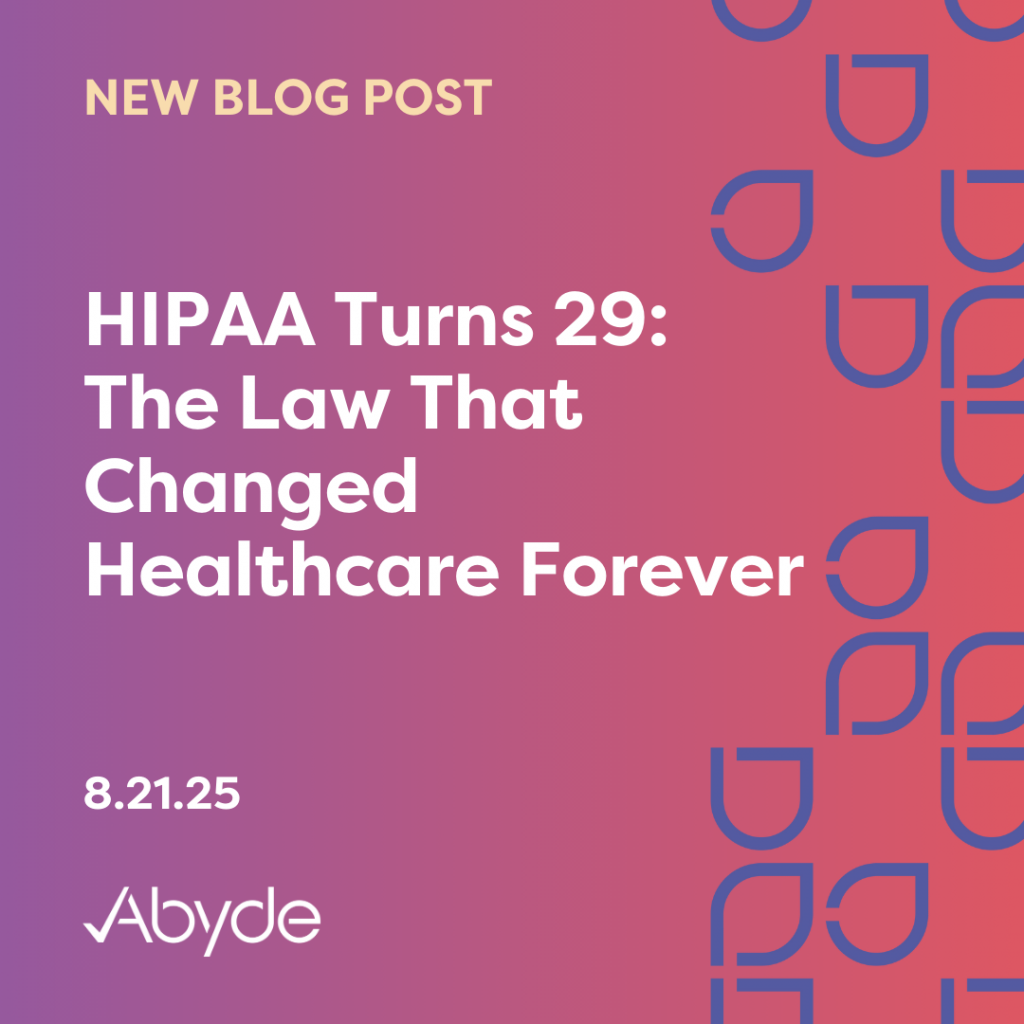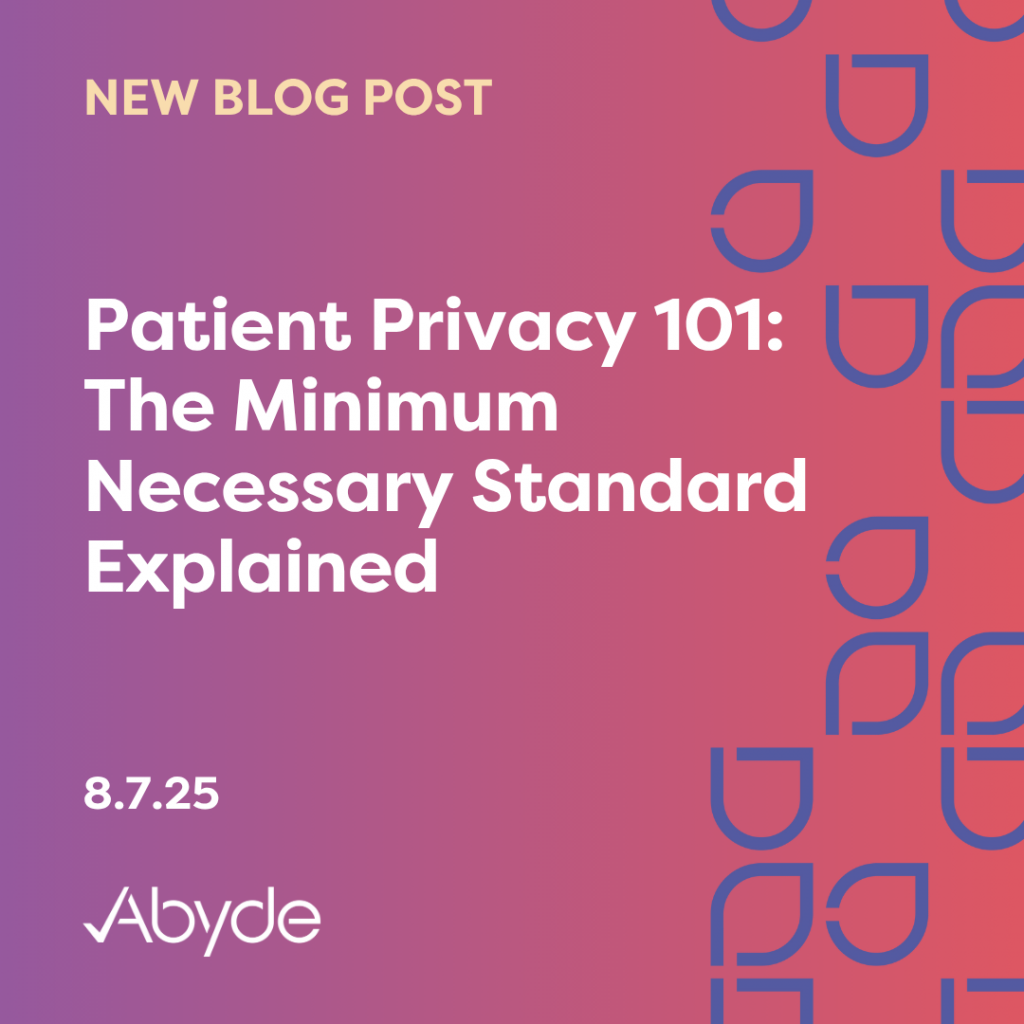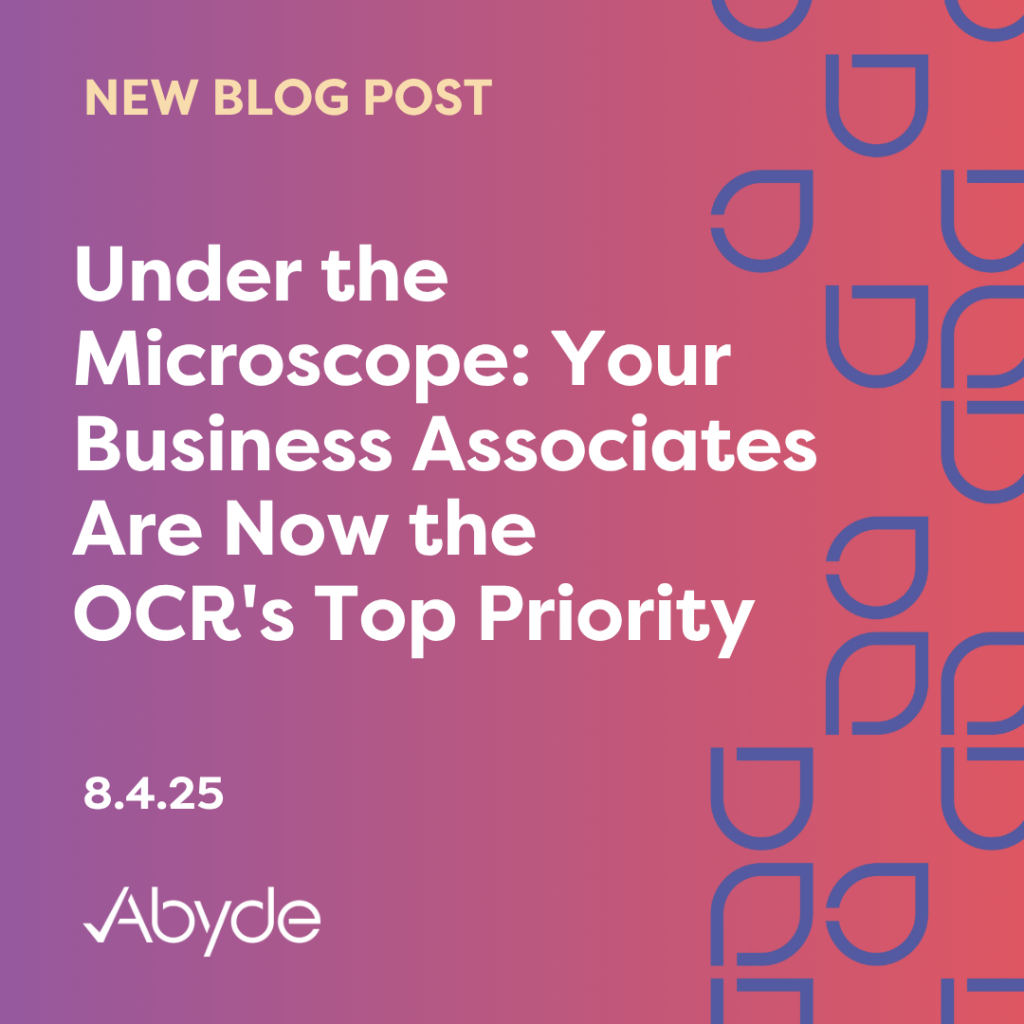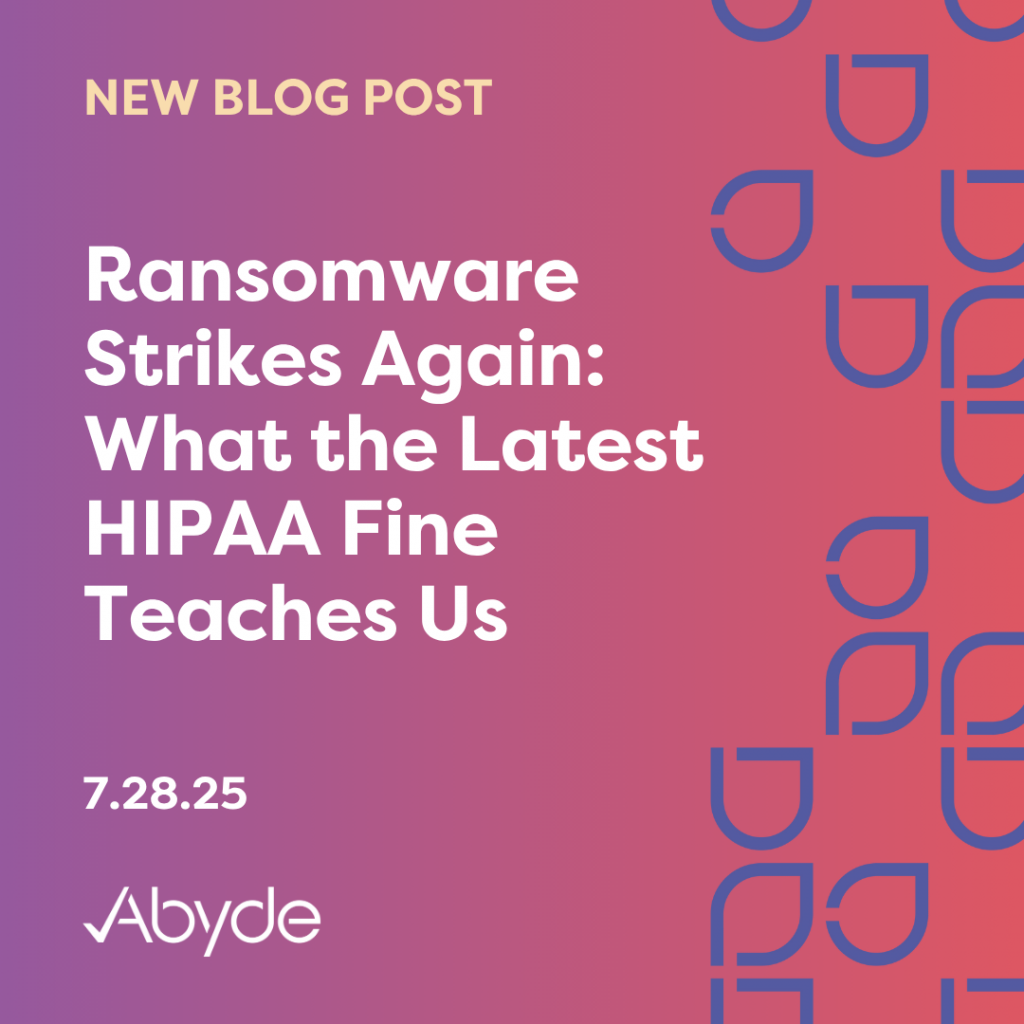September 23, 2025 At the foundation of every HIPAA-compliant practice is a Security Risk Analysis (SRA). The SRA is a thorough assessment of all administrative, physical, and technical safeguards your practice has in place to secure Protected Health Information (PHI). The comprehensive SRA needs to include everything your practice does, from using a sign-in sheet to alarms in the practice to how your computer systems are handled. This documentation must be updated annually and completed for every location of a practice. It is also required for MIPS. This analysis allows your practice to identify vulnerabilities before an issue occurs. If your SRA shows a server running an outdated version, fix it now; don’t wait for it to become a breach. A missing SRA is one of the most common HIPAA violations discovered by the Office for Civil Rights (OCR). In fact, during the last round of audits, 86% of Covered Entities, or practices, couldn’t produce a compliant SRA. The OCR has also introduced the Risk Analysis Initiative, focusing on this document when investigating practices. Since the end of 2024, there have been 10 enforcements of this initiative, totalling over a million dollars in fines. During any investigation, the OCR can and will ask you to provide proof of this document. This document sets the groundwork for compliance in your practice and is key to proving proactive compliance if a situation arises. However, completing an SRA is easier said than done. With intricate complexities and the different areas of your practice that must be reviewed, it’s tough to figure out where to start. Manually completing an SRA takes time and is prone to mistakes. Hiring a third-party consultant can get expensive, and you could lose patient time if they need to close your practice while completing the documentation. Streamlining the SRA There is a better way. Abyde has released its Security Risk Analysis for Covered Entities solution to simplify completing this documentation. While this feature is implemented in the full HIPAA for Covered Entities product, alongside training, dynamic policy and procedure documentation generation, Business Associate Agreements, event logs, live support, and more, Abyde has created our latest product to assist practices in taking their first step toward compliance. The Security Risk Analysis for Covered Entities solution is crafted for healthcare practices and streamlines the SRA into an intuitive questionnaire. Instead of closing your practice for the day, complete this questionnaire within an hour with cloud-based software. After completion, the Security Risk Analysis software for healthcare will generate a Scorecard report, highlighting any recommendations for your practice to achieve compliance. The full SRA only needs to be completed once. After that, the software prompts you with ongoing questions whenever updates are required. For example, if your practice isn’t encrypting emails, it will flag this as a high risk and remind you on a monthly basis until your practice takes the proper precautions. Enjoy the SRA? You can easily upgrade the Security Risk Analysis software for healthcare to Abyde’s full HIPAA for Covered Entities product and maintain your SRA. Get Compliant Today A Security Risk Analysis doesn’t have to be complicated or time-consuming. With Abyde’s Security Risk Analysis for Covered Entities software, your practice can complete a thorough, compliant SRA quickly and accurately, without disrupting patient care. Ready to streamline your SRA? Meet with a compliance consultant today.
HIPAA and the Cloud: Is Your Patients’ Data Safe or at Risk?
September 18, 2025 Sure, your dog pics and selfies are safe in the cloud… but what about your patients’ data? When technology advances, your practice evolves too. As a healthcare provider, your job is to keep your patients and their data safe. The Health Insurance Portability and Accountability Act (HIPAA) covers protecting this data, especially how it is stored. For example, what if a bad storm floods your practice and ruins an internal server? With cloud storage, this isn’t an issue. Cloud storage is hosted elsewhere and accessed through an internet connection, keeping your practice’s Protected Health Information (PHI) safe. Cloud storage and computing are encouraged, but it’s up to your practice to utilize them compliantly. Best Tips for Using Cloud Storage It’s time to do research before working with any cloud service provider. Some good questions to ask include: Does this organization highlight its HIPAA policy on its site? Is it clear what safeguards they have in place to protect your data? Will they encrypt the PHI? Are the servers where PHI is stored located within the United States? While this is not a HIPAA requirement, it’s considered more secure than other nations. Most importantly, is this cloud service provider aware of the extent of its HIPAA responsibilities? Cloud service providers are considered Business Associates (BAs) under HIPAA. While BAs might not deal with patients directly, they handle patient data and are required to follow HIPAA legislation. Cloud service providers are considered BAs whether or not they have access to the encrypted data. Since they store it, they are considered BAs. BAs must complete a Security Risk Analysis (SRA), train staff, maintain up-to-date documentation, and more, like any healthcare practice. Before working with a BA, it is essential to complete a Business Associate Agreement (BAA). BAAs are legal contracts with BAs that ensure both parties are aware of their responsibilities when handling PHI and define the course of action if a breach occurs. A BA and Covered Entity (or, healthcare practice) must complete a BAA before entering a business relationship. Your practice should also avoid working with BAs who do not want to be held legally responsible for handling PHI. Not having a BAA with your cloud storage provider can get you into hot water with HIPAA. In fact, a university was fined nearly 3 million dollars by the Office for Civil Rights (OCR). The OCR discovered that the BA and the college never signed a BAA after a breach of student health data. Storing PHI Compliantly While choosing the right cloud service provider can be extensive, it will significantly benefit your practice. In fact, 83 percent of small healthcare practices surveyed named cloud-based EHR implementations the most meaningful business decisions they had made in the last few years. By doing your due diligence, working alongside your IT team, completing a BAA, and continuing to ensure the proper safeguards are in place, your patients’ PHI can be stored safely in the cloud. As your practice adopts more innovative data management methods, your HIPAA compliance should keep pace. With the right compliance software, your practice can easily streamline requirements like the BAA. Meet with an expert today to learn more about HIPAA compliance in your practice.
Who’s Looking at Patient Records? Access Logs Tell All
September 15, 2025 In your practice, everyone plays an important role. From receptionists handling schedules to doctors delivering care, ensure every team member knows their role and is empowered to act on it. Role-based privileges, which dictate who has access to what information, are also part of assigning roles in your practice. For example, while your receptionist might have access to a patient’s contact information to confirm an appointment, a doctor would have access to X-rays to assist in treatment plans. Without clear boundaries, your practice risks HIPAA violations. For example, it’s a major compliance breach if Beth from accounting looks at a patient’s sensitive health records. That’s where access logs come into play. HIPAA Access logs are key to ensuring that Protected Health Information (PHI) is kept secure. What is an HIPAA Access Log? As the name suggests, HIPAA access logs account for who, when, and for how long a staff member is utilizing a specific software. Your EHR or EMR will keep a running log when staff access information. Your practice must maintain access logs for six years. That’s why it’s so essential for every staff member to have an individual login when using your practice’s systems. Your practice’s HIPAA Compliance Officer (HCO) must routinely monitor access to PHI. Staff must know their responsibilities and the consequences of exploiting access to health records. The OCR takes these exposures very seriously. Earlier this year, a health organization was fined $800,000 due to unauthorized access to health records. The number of exposed patients? One. The patient became aware of this breach and reported the organization to the OCR. An access log is imperative for monitoring unauthorized third-party access, such as hackers, in addition to ensuring staff follow their role-based responsibilities. Healthcare records can often be compromised, and no one realizes it until it’s too late. Cyberattacks happen to organizations of all sizes. In fact, after the multi-billion-dollar breach, investigators found that hackers had infiltrated Change Healthcare’s systems and gone undetected for over a week. Stay Logged In Clear roles and HIPAA access logs aren’t just paperwork; they’re vital for the success of your practice. Your practice must train and empower staff on their responsibilities and investigate when things seem fishy. It only takes one slip-up, even just one patient’s records, to be exposed by impermissible access and caught in the OCR’s crosshairs. With the right software solution, your practice can streamline training, documentation, and logs within a centralized compliance hub. Smart software gives your team the tools to succeed and makes compliance completely doable. Meet with an expert today to learn more about simplifying HIPAA compliance for your practice.
One Click Away from a Breach: Protecting your Practice from Phishing Emails
August 28, 2025 We’ve all received an email that’s a little too good to be true. Maybe it’s a “Congratulations, you’ve won a free vacation!” message, or a heartfelt request from an “international prince” who just needs your bank details. While these examples may sound obvious, phishing emails today are far more convincing, using logos, sender names, and even tone that mirror trusted organizations. However, healthcare staff have an even bigger target on their backs due to the sensitive nature of Protected Health Information (PHI). Healthcare staff, from the office manager to the doctor, are close to patients’ Social Security Numbers, billing information, and more, all of which are a goldmine for a malicious actor. In light of the most recent $170,000 phishing HIPAA fine, it’s essential to review the best tips for keeping your email and patient data secure. Email Safety 101 When hackers send 3.4 billion phishing emails daily, it’s essential to remain vigilant when reviewing emails. One mistaken click can jeopardize thousands of health records, so always carefully read your emails. While your spam filter might hide some risky emails, phishing has become more advanced, including spoofing staff members and, in general, looking legitimate upon first glance. First, when receiving an email, always think before you click. Does the email look suspicious? Is the grammar odd? Are there unnecessary attachments? Never download any attachments unless you are sure of the sender. A hacker could expose your entire practice to ransomware with one unsafe attachment. All it takes is one click. When receiving an email, always ensure the account looks authentic. A familiar name doesn’t always mean a safe email. Cybercriminals are betting on healthcare staff not knowing the difference between ‘yourboss@email.com’ and ‘y0urboss@email.com’. The internet also provides hackers access to public posts, so even if the profile photo might be of your boss, chances are it isn’t your boss sending you an email demanding personal information. Watch for common red flags. If an email feels unusual, pause before acting, especially with messages marked as “urgent.” Cybercriminals rely on panic to push quick clicks. For example, an email shouting “WARNING: Update your EHR immediately using this link” is likely a scam designed to trick you into handing over access. Delete spam emails or forward them to your phishing IT team (if applicable, likely for larger organizations), and ensure your team is aware of any threats and trained to identify and handle them appropriately. Keeping it Secure Phishing emails aren’t rare; they’re routine. That’s why it’s critical to give your staff the tools they need to safeguard PHI. A strong compliance program goes beyond policies by providing hands-on email safety training, encouraging protections like multi-factor authentication, and connecting your practice with trusted IT resources. Meet with an expert today to learn more about HIPAA compliance and email safety.
Phished and Fined: A $175,000 HIPAA Lesson for Business Associates
August 26, 2025 When scrolling through your inbox, letting your guard down is easy. Maybe you click on that email that looks like it’s from your bank without hesitation, or are swayed by the unsolicited message for a random all-expenses-paid trip. Unfortunately, phishing emails are everywhere, and they target the healthcare industry due to the sensitive nature of Protected Health Information (PHI). BST & Co., CPAs, LLP, known as BST, is a victim of phishing scams. The New York accounting and consulting firm, which works with practices, received the latest HIPAA enforcement, with a $175,000 fine and a two-year Corrective Action Plan or close monitoring by the Office for Civil Rights (OCR). The OCR discovered, after the fallout of a phishing email, that the Business Associate (BA) had failed to complete a Security Risk Analysis (SRA). This is the 10th enforcement of the Risk Analysis Initiative since its introduction last year. An SRA is a requirement for all HIPAA-regulated entities to assess all potential vulnerabilities of any physical, technical, or administrative safeguard in their organization. By identifying any concerns before a breach occurs, organizations are able to better safeguard PHI, keeping both their business and patients safe. This fine reminds us that BAs are just as responsible for upholding HIPAA as traditional medical practices and that completing the SRA is paramount. What Happened? On December 4, 2019, malware entered BST’s network after a successful phishing attempt. From December 4 to December 7, 170,000 patients’ PHI was exposed. The OCR began its investigation after BST reported the breach in February 2020. The OCR discovered that BST had not completed a thorough SRA. With a thorough SRA, BST could have seen the vulnerabilities regarding emails, or even how they secured Covered Entities’ PHI, and either prevented this breach or minimized its impact. Compliant Business Associates Keep Patients Safe Even though BST wasn’t treating patients directly, as an accounting and consulting firm they still had access to a Covered Entity’s PHI. That’s a clear reminder of just how important it is to make sure your Business Associates (BAs) are fully compliant. When your BA follows a comprehensive HIPAA compliance program, your practice gains peace of mind and a stronger, more secure partnership. The right solution helps you stay ahead of your BA responsibilities, whether that’s generating and maintaining Business Associate Agreements, providing staff training with practical tips like email safety, or completing a Security Risk Analysis (SRA) to uncover hidden risks. Connect with our team of compliance experts today to learn more.
HIPAA Turns 29: The Law That Changed Healthcare Forever
August 21, 2025 Happy birthday, HIPAA! Since the Health Insurance Portability and Accountability Act’s inception on August 21, 1996, to say healthcare has changed is an understatement. As we journey through memory lane and maybe open a present or two, it’s essential to see how HIPAA has championed patient privacy rights and made healthcare better for all. Life Before HIPAA While 29 years ago might not feel that long ago, the way healthcare staff handle Protected Health Information (PHI) has completely changed. When HIPAA first arrived, its purpose was simple: improve healthcare portability and reduce fraud. What wasn’t as obvious at the time was that it would reshape how privacy, security, and patient rights were protected across the country. It was the 90s. The age of AOL dialup, grunge, and while not as memorable for most, the start of the digitization of health records. The government realized that healthcare’s move into the digital world would create risks instead of progress without rules for consistency, access, and security. As the law was put in place to set a foundation for the rise of the internet, there was another glaring concern: patient privacy. Before HIPAA, your health records could easily be shared with your employer, landlord, and more. This information could influence hiring decisions, deny loans, and even more reasons unrelated to a patient’s medical treatment or health care reimbursement. HIPAA’s Revolution As HIPAA was signed into effect, its core pillars continued to take shape. The final Privacy Rule was issued in 2003. Just two years later, the Security Rule in 2005 laid out the required technical, administrative, and physical safeguards for PHI. But technology didn’t stop evolving. As electronic health records became more widespread, so did the risks. This led to more legislation, including the HITECH Act of 2009, which strengthened HIPAA enforcement, increased penalties for noncompliance, and introduced the Breach Notification Rule, requiring organizations to notify patients when their data was exposed. The Office for Civil Rights (OCR) also issued a final rule in 2013, which clarified legislation and increased the role that Business Associates play when handling sensitive information, and made it possible for vendors to be audited. In the years since, HIPAA has continued to adapt to new challenges, like the rise of ransomware. Enforcement has also grown sharper, with multimillion-dollar settlements and corrective action plans reminding practices that compliance is not optional. HIPAA continues to grow and adapt to the future of technology, including new proposed updates likely to take effect next year. What’s Next for HIPAA? Over the past nearly thirty years, it’s clear that compliance isn’t just a regulation; it’s a responsibility. Healthcare providers and business associates all share the duty of keeping PHI safe. With new challenges like AI-driven threats, cyberattacks, and shifting regulations, HIPAA’s next chapter will be just as important as its first. As HIPAA continues to evolve, staying on top of HIPAA legislation can be overwhelming. With smart software, it doesn’t have to be. Intelligent software can stream the latest updates, documentation, and more to ensure your staff is compliant. Here’s to HIPAA and what’s next for healthcare compliance. Looking to learn more? Meet with a compliance expert today.
Patient Privacy 101: The Minimum Necessary Standard Explained
August 7, 2025 Under HIPAA, healthcare practice staff must keep a secret. This means everyone with access to patient data, from doctors to receptionists, can’t share any information about a patient. While it might feel enticing for a nurse to tell their friends about an old high school bully coming into their practice with a rash, and revenge might feel sweet, it’s a total HIPAA no-no. One of the pillars of HIPAA is the Privacy Rule, which dictates when and if Protected Health Information (PHI) can be shared. The Privacy Rule keeps patient data secure and allows the best care, with patients knowing their information will remain confidential. However, sometimes information needs to be shared. This is where the Minimum Necessary Standard comes in. With this rule, healthcare providers and their Business Associates can share PHI if it’s vital to complete work tasks. Safeguarding confidential information upholds the integrity of your practice and allows patients to feel comfortable when addressing health concerns. Your practice must follow HIPAA to keep patient data safe and secure. What is the Minimum Necessary Standard? All in the name, the Minimum Necessary Standard defines how HIPAA-regulated entities can share information. Depending on the situation, more information might be warranted to be shared compared to others. The easiest way to explain the HIPAA Minimum Necessary Standard is to compare it to ordering pizza. When you order a pizza for delivery, you only provide the minimum necessary information: your name, what you want to eat, and your address. You wouldn’t share details like what you ate for breakfast or the names of everyone in your house because that information isn’t needed for the delivery. In a healthcare setting, while not as cheesy, the same principle applies. A front-desk receptionist, for example, needs access to a patient’s basic information to confirm an appointment. They don’t need access to the patient’s full medical history. The minimum information required for their job is scheduling and patient identification, not the patient’s back surgery details. The HIPAA Minimum Necessary Standard ensures that everyone, from the front desk to doctors, to even your vendors, can only access the PHI they absolutely need to do their job. In some situations, more information can be shared more easily. These exceptions include disclosures for treatment purposes, such as when a doctor needs a patient’s complete medical history to provide proper care. Your practice can share PHI with the patient directly, or someone with explicit authorization from the patient, or in a public emergency. Finally, disclosures may also be required by law. Simplifying the Minimum Necessary Standard Your staff must uphold the security of PHI. By following the HIPAA Privacy Rule, you stay compliant and build a successful practice. When patients feel confident that their records are safe, they’ll trust you and feel empowered to choose your practice. It’s a serious responsibility. With the right solution, staff can be appropriately trained to handle health records. Smart software can streamline training for your practice and provide dynamically generated policies and procedures for all staff to access and review whenever they have a question regarding the use of PHI. Meet with a compliance expert today to learn more about protecting your practice and patients.
Under the Microscope: Your Business Associates Are Now the OCR’s Top Priority
August 4, 2025 Let’s talk paperwork. While that might not seem like the most interesting or important thing to focus on when running your practice, having the right documentation is key to its success. A Business Associate Agreement (BAA) is one of the many documents you need to be HIPAA compliant when running a practice. When working with Business Associates (BAs), or the third-party vendors who can access your practice’s Protected Health Information (PHI), you must have a signed agreement in place. These BAs can include anyone from your IT company to the company that handles your shredding. In short, if a business has any access to PHI, it’s required. The Office for Civil Rights (OCR) has put Business Associates (BAs) in the hot seat, with proposed new legislation strengthening their requirements and millions of dollars in fines imposed this year alone. It’s time to take a fresh look at your partnerships, and the best place to start is by having a solid BAA. What does a BAA do? First things first, what does a BAA even do for your practice? What does it include? Well, this required agreement outlines all responsibilities your practice and business partner must follow when handling PHI. The document includes the definition of PHI, when the BA can use the data, and how each party must secure data. This legally binding agreement ensures each party understands the serious nature of handling PHI. Overall, it’s another layer of protection to clearly define your relationship with a BA. A BAA is essential, especially when a Business Associate experiences a data breach. Business Associates are frequent targets for malicious actors. One of the first fines in 2025 was a $90,000 penalty for a ransomware breach that targeted a data hosting company. This breach exposed the PHI of patients from 12 different healthcare practices. These 12 healthcare practices would also need a BAA with the hacked party. If not, the Covered Entity could also be liable for the BA’s missteps. The OCR has also fined Covered Entities for missing a BAA. Here’s a prime example: A healthcare provider was in a nasty dispute with their BA. They even reported the BA to the OCR, claiming the BA was holding PHI hostage for a $50,000 payment. But here’s where it took a turn: The OCR didn’t just investigate the BA; they also focused on the healthcare provider. The result? The OCR slapped the provider with a $100,000 fine for missing crucial documentation, including, you guessed it, a BAA. Keeping BA Partnerships Secure While ensuring documentation is in order is no one’s idea of fun, protecting your practice and keeping patients’ data safe is imperative. With the right solution, your practice can make documentation a piece of cake. While a BAA may not be as appealing as chocolate fudge, software can streamline the process, creating a legally sound and complete document that is just as satisfying. Meet with an expert today to learn more about ensuring compliant vendor relationships.
Ransomware Strikes Again: What the Latest HIPAA Fine Teaches Us
July 28, 2025 Healthcare’s cybercrime nightmare just got more expensive. With over half a million dollars in fines and the second HIPAA ransomware fine issued this month alone, it’s time to acknowledge the serious threat cybercrimes pose to healthcare. The Office for Civil Rights (OCR) just announced its latest HIPAA fine, following a ransomware attack affecting a surgery center in New York, totalling $250,000 and placing the practice under a two-year Corrective Action Plan (CAP). The two-year period includes constant government monitoring, ensuring the healthcare provider has taken action to mitigate risks and secure Protected Health Information (PHI). Here’s where things get interesting. Upon further inspection, the exact ransomware variant, PYSA, explicitly targets the healthcare industry. Think about it: cybercriminals know the absolute treasure trove of sensitive patient data a healthcare organization holds. As malicious actors know the importance of patient health records, your practice must be extra vigilant when handling PHI. What Happened? In March 2021, an unauthorized actor gained access to the networks of Specialty Surgery Center of Central New York (also known as Syracuse ASC, LLC). The hacker deployed ransomware in the organization’s networks for over two weeks. This ransomware exposed nearly 25,000 patient records, with access to Social Security numbers, addresses, health histories, and more. Syracuse ASC, LLC, notified the OCR of this breach in October 2021, over six months after the initial intrusion. This wait violated the HIPAA Breach Notification Rule. Given the massive breach, the healthcare provider had to notify the OCR, patients, media, and potentially the State Attorney General within 60 days of discovery. Notifying these parties allows patients to take control and explore options for protecting and monitoring their data post-breach. Additionally, it could have expedited the OCR and State officials’ investigations into the extent of the ransomware attack. During the investigation process, the OCR made another startling discovery: no Security Risk Analysis (SRA) was in place. A thorough SRA is required to maintain your practice’s security. By examining existing safeguards, you can identify and address vulnerabilities proactively before they cause problems. This practice learned the hard way about a common HIPAA pitfall: missing an SRA. Due to this, a hacker infiltrated and exploited the vulnerability of an insecure network, leading to a quarter-million-dollar fine. Protecting Your Practice Against Ransomware Hackers have discovered a gold mine with medical records costing upwards of $1000 on the dark web, compared to the average credit card number fetching 25¢. When hackers directly target healthcare practices, your compliance program and safeguards must be in order. Proactive compliance is key to the security of PHI. Your practice can mitigate and minimize ransomware threats by using the right compliance solutions and robust IT assistance. With the right software, it’s easy to streamline pillars of HIPAA compliance, like the SRA, identifying issues early to avoid risking your patients. Meet with our team of experts to learn more about how you can simplify HIPAA compliance for your practice.
Strong Passwords, Secure Patients: Protecting PHI in Healthcare
July 23, 2025 While Password123 might be easy to remember, it might not be the best password. In our current healthcare landscape, intertwined with technology, from EHR systems to patient communication, it’s time to upgrade password security. A strong password and other layers of protection are key to keeping your practice’s logins secure and, ultimately, patient Protected Health Information (PHI). Thorough password management might be the deciding factor in stopping a major breach. Just look at the Change Healthcare debacle. Billions of dollars lost, systems crashed, insurance claims in limbo, and over 100 million patients exposed. At the root of this? Missing multi-factor authentication (MFA). After major breaches caused by poor password management, it’s time to prioritize your passwords and adhere to best practices. Ditch the Default Password Let’s face it. It’s tempting to use passwords everywhere. However, it’s a password security red flag. When it comes to passwords, we recommend at least eight characters with several unique characters, including a number, an uppercase letter, a lowercase letter, and a symbol. This enhanced security makes unauthorized account access more challenging. Also, if one account is compromised, the breach can be more easily contained than if all logins shared the same password. On that note, ensure all staff have their own logins. This isn’t just about stopping password sharing; it’s about giving your practice the power to keep a close eye on who’s accessing Protected Health Information (PHI) and quickly spotting anything out of the ordinary. When in Doubt, Change it Out We also recommend changing passwords at least three times a year, keeping account access current, and making unauthorized users’ access more difficult. Regular password changes help mitigate risk if an older password is exposed in a data breach, and make it harder for hackers to brute-force guess your password. They also ensure that anyone who has lost access to your accounts, such as offboarded staff, cannot continue to access systems. By consistently making password changes a part of your security routine, you create a dynamic defense that significantly reduces the risk of unauthorized access. Your Password’s Best Friend: Multi-factor Authentication On top of having a secure and current password, having MFA enabled on all your accounts is key to keeping PHI safe. Just like peanut butter and jelly, passwords and MFA are a perfect pair. MFA is that crucial next step, providing an extra layer of security that makes a major difference in keeping your information safe. Common MFA examples include a text, a random code generated, or even through an automated call. That extra protection ensures that the person logging in is authorized and authenticated. This extra level of protection ensures that when someone tries to log into your accounts, it’s truly you. It’s all about verifying and authenticating that the person accessing the account is authorized. With MFA enabled, a hacker won’t be able to log in without that unique code sent to your phone, an app, or even your email. This significantly increases the difficulty for unauthorized access, giving you peace of mind that your PHI remains secure. Securing your Compliance Program The sheer volume of tasks can make managing compliance feel like a full-time job, from multi-factor authentication to complex password policies and regular access reviews. While it’s easy to feel overwhelmed, your practice can streamline this with the right solution. Smart software simplifies compliance for your practice by sending out compliance reminders, such as when it’s time to change your password, providing best tips and practices, and automating policies and procedures for your practice. Meet with an expert today to see how you can streamline compliance for your practice.
